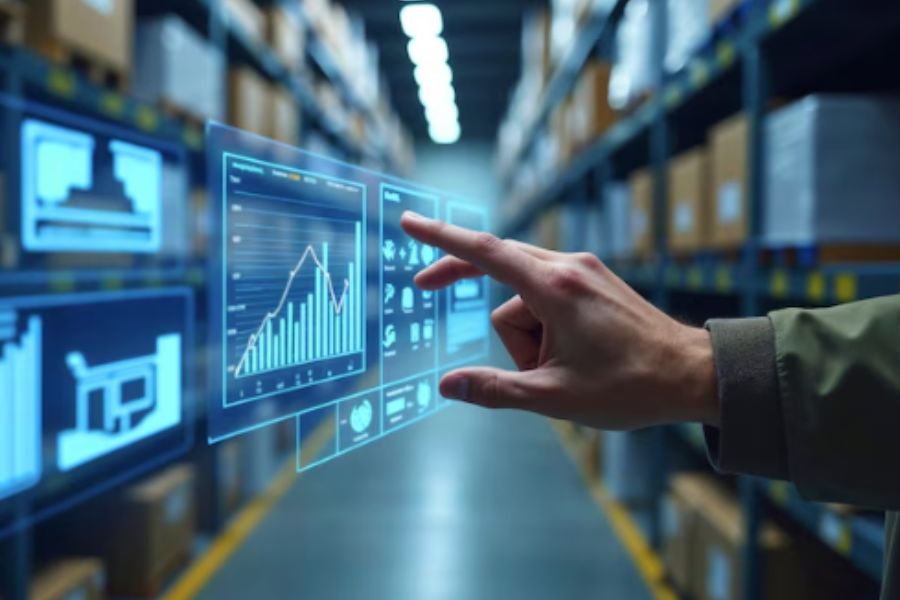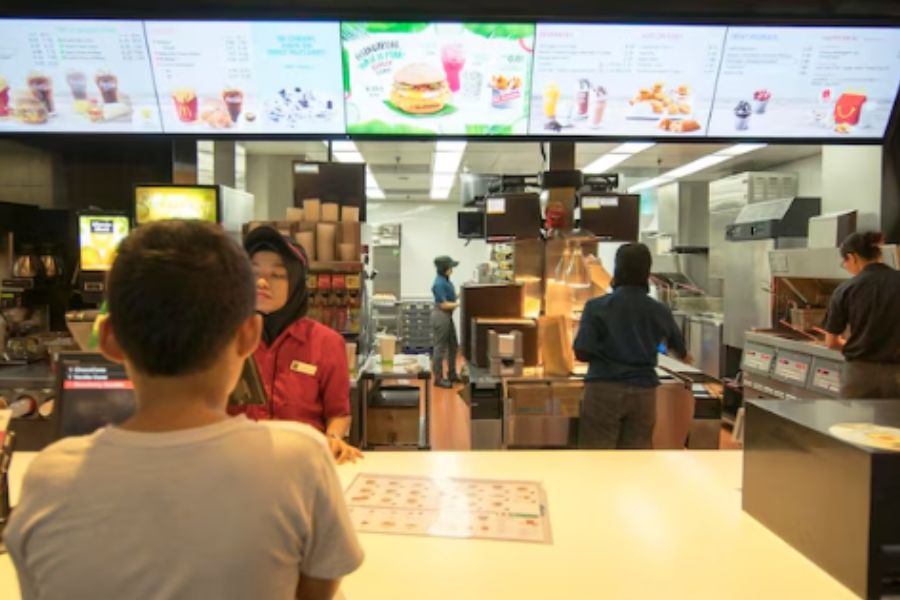Are you ready to dive into the future of retail POS systems? In a world where technology is constantly evolving, staying ahead of the curve is crucial for businesses. As technology continues to evolve, so do these systems, ushering in a new era of innovation and efficiency. In this blog, we’ll delve into the future of retail POS, exploring emerging trends that are shaping the way businesses operate and interact with their customers.
Join us as we explore the latest trends shaping the landscape of retail POS systems and discover what lies ahead.
What Are Retail POS Systems?
Retail POS systems encompass both hardware and software components designed to streamline the checkout process, enhance operational efficiency, and improve the overall customer experience.
These systems are typically a combination of hardware such as cash registers, barcode scanners, receipt printers, and card terminals, along with software applications tailored to meet the specific needs of retail businesses.
Retail POS systems have several key features such as:
- Transaction processing: At its core, a retail POS system facilitates the processing of sales transactions. Cashiers can quickly and accurately ring up purchases, accept various forms of payment, and generate receipts for customers.
- Inventory management: One of the most critical features of retail POS is inventory management. These systems allow businesses to track stock levels in real-time, automatically updating inventory counts as items are sold or restocked. This functionality enables retailers to optimize their stock levels, prevent stockouts, and minimize excess inventory.
- Sales reporting and analytics: Retail POS systems provide robust reporting and analytics capabilities, allowing businesses to gain insights into their sales performance, customer purchasing patterns, and inventory turnover rates.
- Customer Relationship Management (CRM): Many POS systems include CRM functionality, enabling businesses to capture and store customer information such as contact details, purchase history, and preferences. This data can be leveraged to personalize marketing efforts, reward loyal customers, and drive repeat business.
- Integration with other systems: Retail POS systems often integrate with other business systems such as accounting software, e-commerce platforms, and customer loyalty programs. This integration streamlines data flow across different departments and ensures consistency across various touchpoints.
- User-friendly interface: Intuitive user interfaces are a hallmark of modern retail POS, ensuring that cashiers can quickly learn and navigate the system with minimal training. This simplicity enhances efficiency at the point of sale and reduces the likelihood of errors.
- Security features: Given the sensitive nature of retail transactions, POS systems incorporate robust security features to safeguard customer payment information and prevent unauthorized access. Encryption, tokenization, and compliance with industry standards such as PCI-DSS are common security measures implemented in retail POS systems.
Future of Retail POS Systems: Trends You Need to Know
As we look ahead, several key trends are poised to reshape the future of retail POS, revolutionizing the way retailers engage with customers and manage their operations. From mobile POS solutions to AI-powered analytics, the landscape is evolving at a rapid pace, driven by technological advancements and changing consumer preferences.
Mobile POS Solutions
Mobile POS solutions have become indispensable for retailers seeking to offer seamless and convenient checkout experiences. One standout example is Square’s app, which enables businesses to accept payments, track inventory, and analyze sales data—all from a smartphone or tablet.
This flexibility empowers retailers to serve customers wherever they are, whether in-store or at pop-up events, fostering increased sales opportunities and customer satisfaction.
With key benefits of mobile POS include increased efficiency, reduced checkout times, and a more personalized customer experience. Sales associates equipped with mobile devices can assist customers on the shop floor, process transactions swiftly, and access real-time inventory information.
Integrated Multichannel Experiences
In today’s omnichannel retail landscape, providing a seamless experience across multiple channels is paramount. Omnichannel experiences involve integrating in-store, mobile, online, and social sales channels, ensuring a comprehensive understanding of the customer relationship across every platform, anytime. While not a novel concept, POS technologies persist in enabling retailers to forge smoother customer journeys across all interaction points.
Different types of POS systems offer retailers the ability to:
- Facilitate non-linear paths to purchase: Modern consumers no longer follow a linear path to buying products. For instance, an individual might first discover a product on Instagram, explore it in a physical store, and ultimately purchase it on the retailer’s website. The purchasing journey has become increasingly intricate, even for traditional brick-and-mortar establishments.
- Utilize ecommerce as an extension of physical stores: Projections suggest that ecommerce will represent nearly a quarter of global retail sales by 2027. Establishing an online presence is thus a top priority for retailers, with 96% of merchants expanding their ecommerce investments in 2022.
- Implement click-and-collect strategies: Customers have the option to shop online and then complete their transaction in-store, benefiting from services like buy online, pick up in-store (BOPIS), or curbside pickup. BOPIS, in particular, has seen substantial growth, reaching over $95 billion in US sales in 2022. Sales from this method are expected to surpass $150 billion by 2025.
Point-of-sale technology enables small businesses to accommodate these complex purchasing behaviors, allowing them to compete with larger companies despite having smaller budgets.
Platforms such as ConnectPOS and Shopify POS enable shoppers to initiate a purchase online and finalize it in-store, or vice versa.
Diverse Payment Options
The future of retail POS systems is characterized by the acceptance of diverse payment options, including mobile wallets, contactless payments, and cryptocurrency. This trend aligns with the changing preferences of consumers and the push towards a cashless society.
Offering diverse payment options enhances customer convenience, speeds up transactions, and caters to a broader customer base. Businesses that embrace this trend are better positioned to meet the evolving expectations of tech-savvy consumers.
With a variety of payment options trending nowadays such as:
- Mobile and contactless payments: The popularity of digital and mobile wallets is on the rise. While they only made up 6% of POS transactions in 2019, it is projected that this figure will increase to 15.5% by 2024. Examples of these payment options include Google Wallet, Apple Pay, PayPal, Venmo, CashApp, and various other apps and services.
- Amazon Pay: Despite its launch in 2007, Amazon Pay has gained significant traction, boasting 5 million merchants and the Amazon Pay for Business app.
- Installment payments: Even without BNPL services, some POS systems offer installment payment options. This is particularly beneficial for consumers who lack access to traditional credit options, as offering these payment plans can enhance conversion rates, average order size, and customer retention.
- Loyalty and rewards programs: Customer loyalty programs incentivize repeat purchases and increase customer lifetime value by offering rewards for ongoing patronage. For more information, refer to the section below on integrated customer loyalty programs.
- Gift cards: The market for gift cards is expected to grow at a compound annual growth rate (CAGR) of 17.7% from 2023 to 2032. Gift cards are not limited to physical cards; platforms like Shopify POS offer an omnichannel gift card experience, enabling cards purchased online to be used for in-store purchases, and vice versa.
Tailored In-store Shopping Experiences
Almost three-quarters of consumers anticipate brands to comprehend their needs. Personalization was a primary concern for only 41% of retailers in 2020 and 2021, taking a backseat to fulfillment solutions and mobility due to COVID-19. However, with more customers returning to stores, personalization has resurged as a higher priority, particularly in 2023.
The POS industry is confronting these challenges directly by simplifying and democratizing personalization for small businesses on a large scale. Reportlinker.com forecasts the global personalization software market to surge from $620.57 million in 2020 to exceeding $1.7 billion by the end of 2025.
Having a POS that delivers personalized shopping experiences is crucial because:
- Shoppers expect it: Consumers not only reap the benefits of personalized experiences but have grown accustomed to them as well. They are aware of the available technology and their data’s presence, expecting to benefit from this exchange of information.
- Customers are willing to share data: Many customers are willing to share their data to receive personalized recommendations. Of those surveyed, 39% prioritize monetary compensation, while 20% would share their data for promotion incentives and interest-based discounts. Perceived value is slightly lower for convenience and speed (16%), more responsive customer service and support (14%), and new services and products (11%).
Emergence of POS Data Analysis
The future of retail POS systems involves extensive data analysis capabilities. Retailers are leveraging POS data to gain insights into customer behavior, optimize inventory management, and make informed strategic decisions.
Data analysis enhances decision-making, allowing retailers to identify trends, forecast demand, and tailor their strategies accordingly. This trend transforms raw transaction data into valuable business intelligence.
ConnectPOS is a POS system that incorporates robust analytics tools, providing retailers with detailed reports on sales, customer behavior, and inventory performance. This data-driven approach enables businesses to optimize their operations.
Transition to Cloud-based Solutions
Cloud-based POS solutions are gaining prominence, offering advantages such as remote accessibility, automatic updates, and scalability. This trend represents a shift away from traditional on-premise systems.
Cloud-based POS systems enhance flexibility, reduce upfront costs, and streamline maintenance. Retailers can access real-time data from anywhere, facilitating better decision-making and adaptability to changing business requirements.
For example, ConnectPOS and Shopify POS are cloud-based solutions that seamlessly integrate with online stores. It enables retailers to manage inventory, process transactions, and access sales data from any device with an internet connection.
Enhanced POS Equipment
The future sees advancements in POS hardware, including ergonomic designs, integrated biometrics, and enhanced durability. These improvements aim to enhance the reliability and functionality of the physical components of POS systems.
Upgraded POS equipment improves operational efficiency, reduces downtime, and ensures a smoother customer checkout experience. Innovations in hardware contribute to the overall effectiveness of the POS system.
Like the Ingenico Tetra series exemplifies enhanced POS equipment, featuring ergonomic design, touchscreen displays, and advanced security features. These devices enhance the overall reliability and performance of the POS system.
Overall Advancements in In-store Technology
Retailers are embracing a holistic approach to in-store technology, integrating POS systems with other technologies such as augmented reality, smart mirrors, and beacon technology to create a futuristic and immersive shopping environment.
Incorporating advanced in-store technology enhances the overall customer experience, attracts tech-savvy consumers, and sets businesses apart from competitors. It transforms traditional brick-and-mortar stores into tech-enabled retail spaces.
Zebra Technologies offers solutions that integrate POS systems with technologies like RFID and IoT to create a connected and intelligent in-store experience. This facilitates better inventory visibility and a more engaging shopping environment.
Cost-effective Subscription Plans
To cater to businesses of all sizes, POS providers are increasingly offering cost-effective subscription plans. These plans allow retailers to access essential POS functionalities without incurring prohibitive upfront costs.
Cost-effective subscription plans make advanced POS technology accessible to small and medium-sized businesses, fostering inclusivity and enabling them to compete effectively in the market.
Some POS systems designed for restaurants offer subscription plans that scale with the business. This approach allows restaurants to choose a plan that aligns with their needs and budget, promoting affordability and flexibility.
Empowering Customers with Checkout Control
Future POS systems aim to give customers more control over the checkout process, allowing them to initiate transactions, split bills, and customize orders through mobile devices or self-service kiosks.
Empowering customers with checkout control enhances the overall experience, reduces wait times, and caters to the preferences of individuals who value self-service options. It aligns with the trend of customer-centric retailing.
McDonald’s “Create Your Taste” kiosks exemplify this trend, enabling customers to customize their orders and complete the checkout process independently. This not only expedites service but also enhances customer satisfaction.
Incorporating AI into Point of Sale Systems
Artificial Intelligence (AI) is playing an increasingly significant role in POS systems. From predictive analytics to chatbots, AI enhances the capabilities of POS systems, offering intelligent insights and automating routine tasks.
AI-powered POS systems can analyze large datasets, automate decision-making processes, and provide personalized recommendations. This trend contributes to operational efficiency, data-driven decision-making, and improved customer engagement.
IBM Watson Order Optimizer is an AI-powered solution that works with POS systems to optimize order fulfillment, helping businesses balance inventory levels, reduce costs, and enhance the overall efficiency of the supply chain.
FAQs: Retail POS Systems
What Do POS Trends Entail?
POS trends encompass a wide range of technological advancements and industry shifts that are shaping the future of retail. From mobile payments to AI analytics, these trends are driving innovation and transforming the way businesses operate.
What are the Key POS Trends for 2024?
Some of the key POS trends for 2024 include the widespread adoption of mobile POS solutions, the integration of AI and machine learning capabilities, and the transition to cloud-based POS systems. These trends reflect a growing emphasis on convenience, personalization, and efficiency in the retail landscape.
What Does the Future Hold for POS Systems?
The future of POS systems is bright, with continued advancements in technology driving innovation and efficiency in the retail industry. From seamless multichannel experiences to AI-powered analytics, POS systems will play a central role in shaping the future of retail for years to come.
Conclusion
In conclusion, the future of retail POS systems is brimming with innovation and opportunity. From mobile payments to AI analytics, retailers are embracing new technologies and trends to enhance the customer experience, streamline operations, and drive growth. Feel free to contact us if you want to understand the future of retail POS systems.



